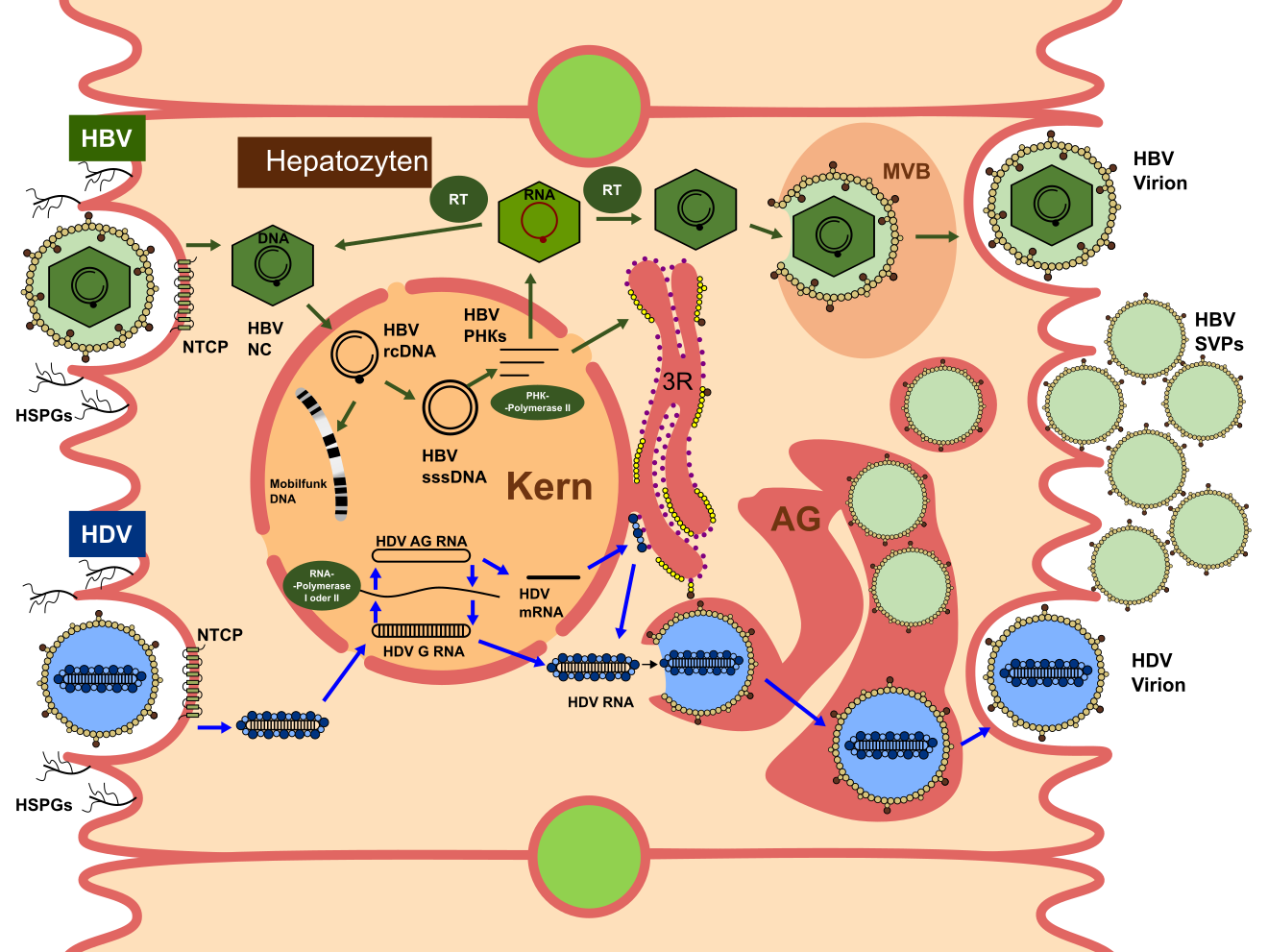
Bildquelle: Kaidor, CC BY-SA 4.0
| HBV | 10 % der HBV-Infizierten sind mit HDV koinfiziert. | |
| Welt | 62–72.000.000 HDV-Infizierte. |
| Bulevirtid (1,2) | Entry Inhibitor, Peptid | Hindert Hepatitis D- und B-Viren am Eindringen in die Zellen. | Hepatitis-D-Viren benötigen Hüllproteine von Hepatitis-B-Viren, vor allem L-HBsAg, um in die Leberzelle gelangen zu können. |
| Die Viren binden sich an den Natrium-Taurocholat-Cotransporter (NTCP) und gelangen dann ins Innere der Zelle. | Bulevirtid verhindert das Andocken an NTCP. | ||
| Interferone | Off-Label-Use-Therapie | Peginterferon alfa, Pegasys® |
Sodium taurocholate cotransporting polypeptide is a functional receptor for human hepatitis B and D virus.
Elife 2012; 1: e00049
2.) Wedemeyer H, et al, for the MYR 301 Study Group:
A Phase 3, Randomized Trial of Bulevirtide in Chronic Hepatitis D.
N Engl J Med 2023;389:22-32.
DOI: 10.1056/NEJMoa2213429
3.) Asselah T, Rizzetto M:
Hepatitis D Virus Infection. Review
N Engl J Med 2023;389:58-70
DOI: 10.1056/NEJMra2212151
4.) Kamal H, Fornes R, Simin J, et al.:
Risk of hepatocellular carcinoma in hepatitis B and D virus co-infected patients: a systematic review and meta-analysis of longitudinal studies.
J Viral Hepat 2021; 28: 1431-42
5.) Ji J, Sundquist K, Sundquist J.:
A population-based study of hepatitis D virus as potential risk factor for hepatocellular carcinoma.
J Natl Cancer Inst 2012; 104: 790-2.